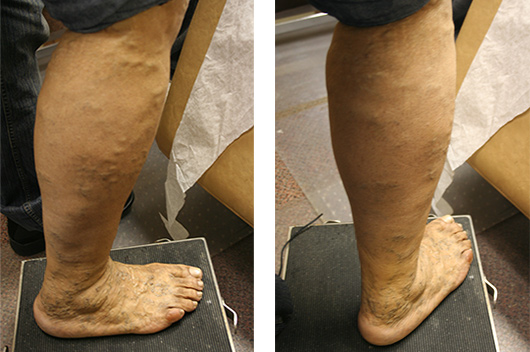Symptoms
Symptoms of varicose veins and other vein diseases come in many forms and should be taken seriously. Symptoms such as bulging veins, blue veins and enlarged veins can be indicative of an underlying condition (venous reflux), which can progressively get worse over time if not treated.
If the varicose vein has become swollen, red, or very tender or warm to the touch you should seek the attention of the doctor. Sores and rashes on the leg and near the ankle are also strong indications of circulation problems and you should consult with an experienced physician. If you are experiencing such symptoms call The Cardiovascular Institute at 407-215-2603 today for an appointment.
Most vein symptoms are worse at the end of the day, in hot weather and after prolonged periods of standing or sitting. Many women experience worse vein symptoms around the time of their menstrual period. Leg elevation, aerobic activity and compression stockings can help to alleviate symptoms.
If you are experiencing any of the following symptoms in your legs, you may want to consider being evaluated by a vein specialist who can differentiate vein disease from mere cosmetic concerns:
|
|
Swelling – Swelling or edema may occur in the lower part of the leg, usually around the ankle or in the feet. This is often more pronounced after longer periods of standing or sitting. Swelling often indicates vein problems occurring below the surface of the skin. An evaluation by a vein specialist should be sought. Unexplained pain or swelling in a leg can be indicative of blood clots. Varicose veins alone usually do not cause swelling of the legs.

